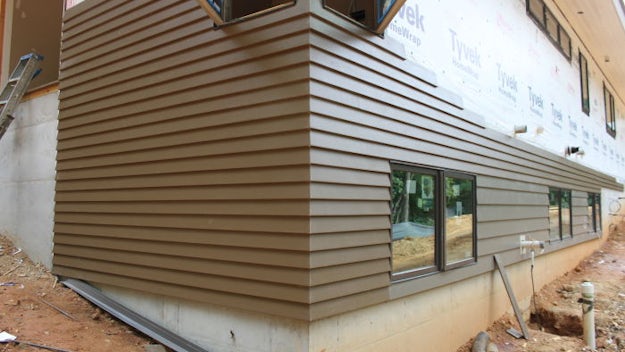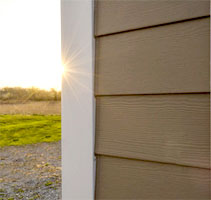They have advantages over most other corner schemes in terms of durability and weather resistance woven corners would be a possibility with hardi i suppose.
Miter corner channel lap siding.
A lot of aluminum corners or xld cornerboards.
Due to the angle of the siding you will first need to determine the angle at which the siding sits on the house wall which is typically between 10 15 degrees.
In a woven corner also known as a laced corner each successive course of siding is mated with its counterpart on the adjoining wall.
Jlc live presenter peter heard shows how to create a perfect joint every time when mitering siding outside corners with beveled cedar siding.
The simplest way to turn the corner when using lap siding or cedar shingles is by constructing a woven corner see figure above.
To detail a mitered outside corner using james hardie s artisan lap siding a robust interior corner must first be constructed.
Use a 4 piece corner system to add a contrasting or coordinating color.
Fiber cement offers a 5 16 lap which doesn t leave much material to work with and creates a difficult angle to boot.
The actual corner should be at a 45 degree angle.
We have found the easiest way to do this is to begin at the bottom course using short pieces to determine the angle.
And some material is simply too brittle for the application.
Mitered corners with truexterior.
Image via james hardie.
Detail showing an outside corner featuring mitered lap siding.
In our part of the country you see them used occasonally with the wood siding on 100 year old homes as an alternative to mitered or woven corners.
Take your home from ordinary to extraordinary.
Blend traditional lap siding seamlessly around every bend with vinyl carpentry corner systems or with cedar impressions shakes and shingles with matching inside and outside mitered corners.
I believe that in years past hardie actually would not warranty mitered corners but there is nothing in their best practices about it anymore.
Behind the fiber cement sheeting should be a breathable waterproof membrane followed by exterior sheathing and then an air gap with small wooden spacers screwed into the corner.














































